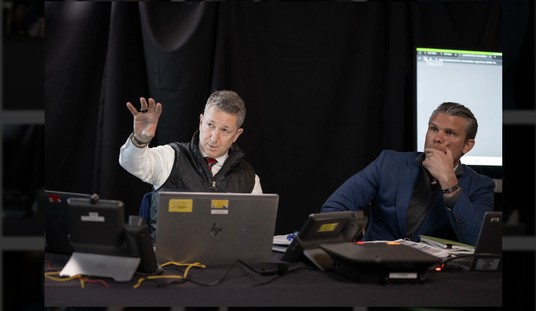#3 — “Takin’ Care of Business” (1973) by BTO
Some Canadians consider the old “Hockey Night In Canada” theme song their country’s “other” national anthem.
However, just as many would probably vote for this accidental tune by Bachman- Turner Overdrive.
(FYI: “American Woman” — our other other anthem — was improvised, too, at a gig at a curling rink after Randy broke a guitar string.)
Alas, the best version of this classic story is only available to premium subscribers to Dennis Miller’s radio show.
But it’s almost worth $50 just to surf along with Miller’s contagious enthusiasm as Bachman — a great storyteller as well as musician — relates this mini-epic saga as only he can.
https://www.youtube.com/watch?v=MLfQqrcJ_h0
#2 — “The Night They Drove Old Dixie Down” (1969) by The Band
When I spoke to Robertson more recently, he added, “It just seemed to fit in with the combination of flavors in the music and the time period we were dealing with at that time. It was like that record was in sepia tone or something. To this day, people ask me, ‘Whatever possessed you to write that song?’ And the answer is, I don’t really know; it’s the only thing I could think of at the time.” (Robertson says the group’s resident Southerner, Levon Helm, nixed a verse about Abraham Lincoln. The song’s Robert E. Lee reference — more appropriate to Virgil Caine’s viewpoint — survived.)
When I was part of the Reagan-era no-nukes movement, we youngsters used to make fun of our older, hippie comrades by skipping behind them during marches, singing the “Aaaaand… aaaannnd… AAANNNDDDD” part from “The Weight.”
They didn’t get it. But to us, those three notes embodied the entire Age of Aquarius, which we thought of as corny ancient history.
And indeed, for many people, The Band are the 60s — the 1860s, that is.
Their Southern fried rock contemporaries, Creedence Clearwater Revival, have been called “Andrew Jackson’s house band.” With “The Night They Drove Old Dixie Down,” The Band could’ve landed that job in the Jefferson Davis “administration.”
But The Band’s apparent determination to look like Lincoln assassination “wanted” posters wasn’t just a flaky fashion statement, or a smug one, like the hippies’ later embrace of that morbid hicksville sideshow Wisconsin Death Trip.
Quite the opposite. Maybe The Band was, consciously or otherwise, trying to recalibrate their furious, spoiled generation’s perspective.
As one historian noted recently:
There were race riots (the “Red Summer of 1919”), worker insurrections, and an Italian anarchist terrorist campaign aimed directly at the elites. The worst incident in US labour history was the West Virginia Mine War of 1920—21, culminating in the Battle of Blair Mountain. Although it started as a workers’ dispute, the Mine War eventually turned into the largest armed insurrection that the US has ever seen, the Civil War excepted. Between 10,000 and 15,000 miners armed with rifles battled against thousands of strikebreakers and sheriff deputies. … Add to all this the rise of the Soviet Union and the wave of socialist revolutions that swept Europe after the First World War, triggering the Red Scare of 1921, and you get a sense of the atmosphere. Quantitative data indicate that this period was the most violent in US history, second only to the Civil War. It was much, much worse than the 1960s.
Like their old boss Bob Dylan, The Band kept one booted foot in a previous century, playing antique instruments and singing uncynically about old-fashioned topics, creating a “campfire” atmosphere at “Big Pink” and their other studios.
Nothing like a group that’s 80% Canadian singing about The War of Northern Aggression. Fortunately, the other 20% is Levon Helm, whose dramatic performance here turns a period piece that could have been a “Schoolhouse Rock” episode into a mournful piece of folk-rock. Helm’s vocals alone are perfectly evocative of the song’s character, but subtler and more crucial is his simultaneous drumming, skipping like a heartbeat whenever he gets to the really sad parts. With the rest of the Band bobbing and weaving within that perfect John Simon production, they get closer than ever to achieving their goal of escaping to a sepia-toned past.
So it came to pass that a Canadian wrote a song about the Civil War, recorded it in a Rat Packer’s Hollywood Hills home, and made it a hit with millions of anti-war hippies.
Making the Basement Tapes was so much more enjoyable than any experience we’d ever had in the studio before, so we thought there must be something to that concept. When you look at it objectively, this [basement in Big Pink, located in Woodstock, New York] is the worst recording circumstance, scientifically, known to man. We’re in a place that has a cement floor, concrete walls and a furnace in the middle of it. This is exactly what you don’t do in a recording studio. But there’s a whole eye contact thing going on there when you set up close together in this sort of horseshoe with a tape recorder at the end. You get to use the whole silent lingo of playing music — where you look at the guy next to you and you indicate, “I’m going to go up here,” or “I’m going to come in here with this vocal,” or “I’m going to that weird chord change now”; all the signals that you use in music. You could really see one another, and there was something about that that was great. It was like some kind of mountain music setup or a living room thing. That’s how we were most comfortable.
So that was the philosophy that sent us in that direction, and that’s why we eventually ended up in Sammy Davis Jr.’s pool house to make our second album.
That house was a fifteen-minute drive from the home where Sharon Tate would be slaughtered that August — a twisted act of revenge against a long-gone former resident, the record producer Terry Melcher, who’d snubbed a would-be folk rocker named Charles Manson.
The Sixties might not have been that bad, in light of previous eras, but hell, they were bad enough — and would soon be on permanent life support, after crashing at the intersection of Cielo Drive and Altamont; some would say, not a moment too soon.
Maybe even Levon Helm. As he noted when looking back on the making of the album, it was an era of:
Tune in turn on drop out that kind of thing. Hate your mom and dad and don’t trust anybody over thirty and a bunch of other stuff that didn’t make a lot of sense. We just steered clear of all that..
https://www.youtube.com/watch?v=bRK–ahPd3s
#1 — “He Stopped Loving Her Today” (1980) by George Jones
Legend has it that George Jones — the Keith Richards of country — was so drunk and stoned during the recording of this song that his daily sessions only resulted in the shortest of usable takes — a phrase here, a note there — and that it took the producer over a year to literally glue them together to create what’s been called “the greatest country record of all time.”
The narration part of the song consists of four lines Jones speaks rather than sings: “She came to see him one last time/And we all wondered if she would/And it kept running through my mind/This time he’s over her for good.”
“Pretty simple, eh?” Jones asks in his book. “I couldn’t get it. I had been able to sing while drunk all of my life. I’d fooled millions of people. But I could never speak without slurring when drunk. What we needed to complete that song was the narration, but Billy could never catch me sober enough to record four simple spoken lines. It took us about 18 months to record a song that was approximately three-minutes long.”
Decades later, when Jack Isenhour literally wrote the book about this storied song and the sessions that captured it on vinyl, he looked into that claim.
Isenhour was stuck comparing “the eyewitnesses with the paperwork” from the recording studio, that put the actual time at one month, not one year. Is the jury still out?
Does it matter?
Millions who’ve wept along to this record would say no, assuming they even know the story behind it in the first place.
But I think it does.
If you imagine this miraculous song being spliced together a few inches at a time, the end product is all the more extraordinary.
“A lot of people tried to copy what Billy did,” Bradley says, “and they’d hire that studio, they’d hire the same engineer, and they’d hire the same musicians and background singers, but they wouldn’t get it, because they were listening to the end result, and the end result was what you heard after you walked the path to get there.
https://www.youtube.com/watch?v=G4WK0ynfEh8
****
Previously from Kathy Shaidle at PJ Lifestyle:









Join the conversation as a VIP Member